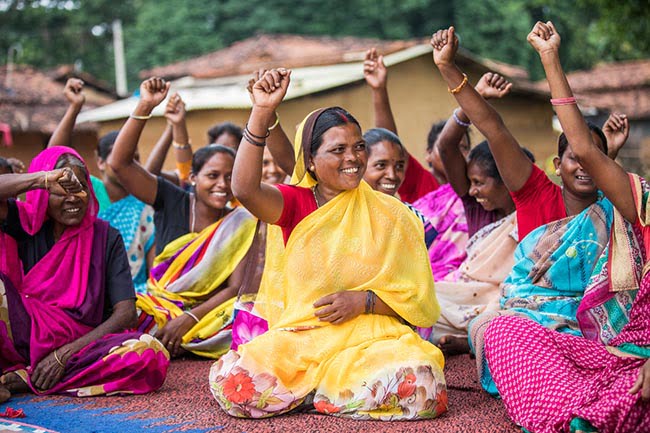“I measure the progress of a community with the degree of progress women have achieved.” – Dr. B.R Ambedkar.
When it comes to the status of women in society, India has always been a land of contradiction. On one hand we have had our first woman educator in Savitribai Phule in 1848, first woman doctor in Anandibai Joshi in 1886 and on the other hand even after a century and half, the enrolment of Indian women in higher education is still only at 48.6%. More than half of the women population still does not go to college. As a nation, we saw our first woman governor of a state in Sarojini Naidu in 1947, first woman Prime Minister in Indira Gandhi in 1966, years before many of the developed nations and yet, women in India are still truly under-represented in electoral politics.
In India, a woman achieving excellence is always looked at as an exception and not a rule. The success of a woman in India has often been, not because of the system but despite of it.
In India, a woman achieving excellence is always looked at as an exception and not a rule. The success of a woman in India has often been, not because of the system but despite of it. These contradictions listed above clearly reflect one thing, empowerment of women in India has had to suffer due to the indifference towards targeted execution and enabling holistic access to resources and institutions for women.
Women empowerment is easier said than done and it will continue to remain an aspirational catch phrase without strategic interventions, thoughtful on-ground execution of the myriad well-intentioned policies and schemes directed towards empowering women and enablement of access. Since independence, the Indian State, has in theory been hitting the right notes globally and domestically when it comes to gender equality and elevating the status of women in the society.
Right from granting universal suffrage in 1947, constitutionally enshrined equal rights for men and women, and passing laws domestically to outlaw practices like dowry and domestic violence. India has also been party to several international conventions including the ILO conventions and the International bill of rights for women among others, showcasing the right intentions towards women empowerment.
The building block of women empowerment rest on the foundation of access to health and nutrition, education, safety, and wellbeing along with economic independence and financial self-resilience.
The building block of women empowerment rest on the foundation of access to health and nutrition, education, safety, and wellbeing along with economic independence and financial self-resilience. Over the past couple of decades, the policy framework has attempted to accentuate the latter two components. The government both at the central and state level have been implementing schemes like Support to Training and Employment Programme for Women (STEP) since the mid-80s.
Currently, there are close to 70 national level interventions in the form of legislation, schemes, and other programmes, as well as over 40 state interventions that are aimed towards women’s economic empowerment through employment and entrepreneurship among other elements. Despite the existence of these schemes, India paints a grim picture when it comes to many indicators. At 18%, India has a minimal share of women’s contribution to the GDP whereas the global average stands at 37%.
Also read: Don’t ‘Empower’ Women—The Hoax That ‘Women Empowerment’ Is Today
As per Sixth Economic Census, out of 58.5 million businesses merely 8.05 million were owned by women. Currently, there is nothing more important that fostering women entrepreneurship, which as per estimates can help generate employment of up to 170 million or 17 crore people by 2030. This in turn would along the way also act as a catalyst to achieve the 5 trillion-dollar economy.
In order to tap the potential of women, the government’s priority should be to strengthen the state and institutional capacities to ensure that all the schemes and policies devised to support entrepreneurship and empowerment among women, see the last mile delivery.
There is certainly a strong case to be made considering all the above, that in order to tap the potential of women, the government’s priority should be to strengthen the state and institutional capacities to ensure that all the schemes and policies devised to support entrepreneurship and empowerment among women, see the last mile delivery. Due to the long standing and pervading socio-economic realities of women in India, the solutions to empower them will always have to consider cross-section of factors.
Only through increasing state capacity will the government be able to promote their schemes like Mudra Loan and Credit Guarantee Scheme among women entrepreneurs to encourage them to take advantage of these schemes in expanding their enterprises. Only by strengthening the institutional capacity will the State be able to curate schemes considering the large-scale state specific variations in attitude, perception and needs of women entrepreneurs. The State also needs to ensure that it uses the available support from the private sector to augment its own capacity and incentivise the private sector not only to generate awareness about different government schemes but also to handhold women wherever they need support.
Also read: Aajeevika India Food Court 2021: Celebrating Rural Women Empowerment, Food & Culture
While new and innovative schemes and policies are always welcome, we need to focus on their better implementation and reach to the last mile. Bottom line is institutional capacities need to be increased to ensure that women empowerment does not remain just an aspirational catch phrase.
Naghma Mulla is the CEO of Edelgive Foundation.
Featured Image Source: Gates Archive/Mansi Midha via air.org



